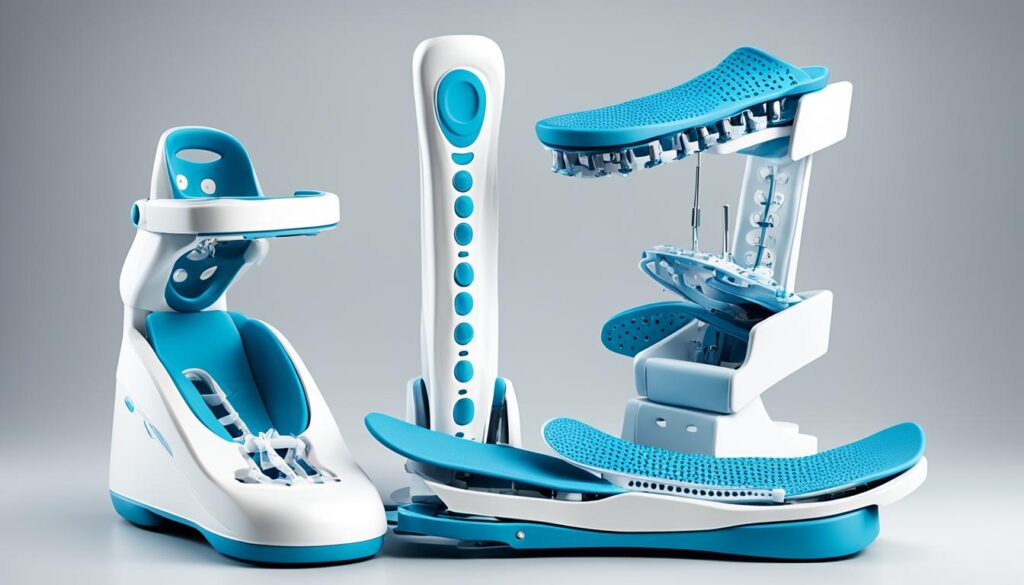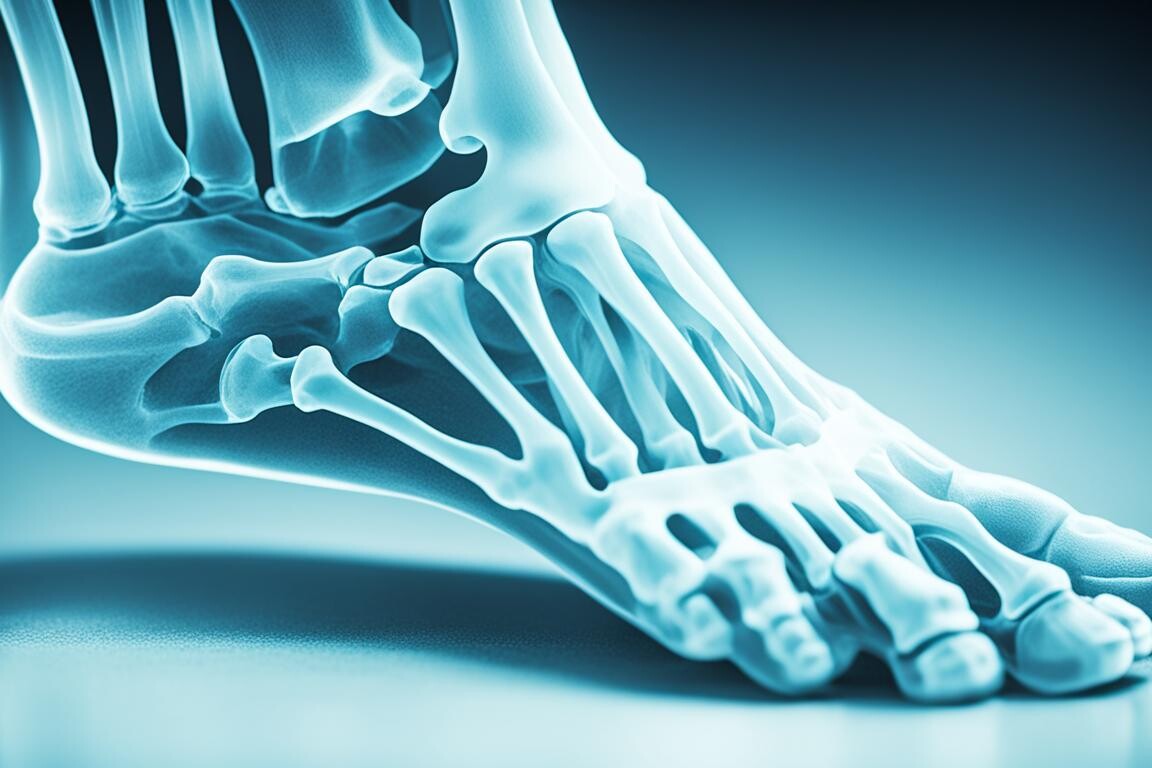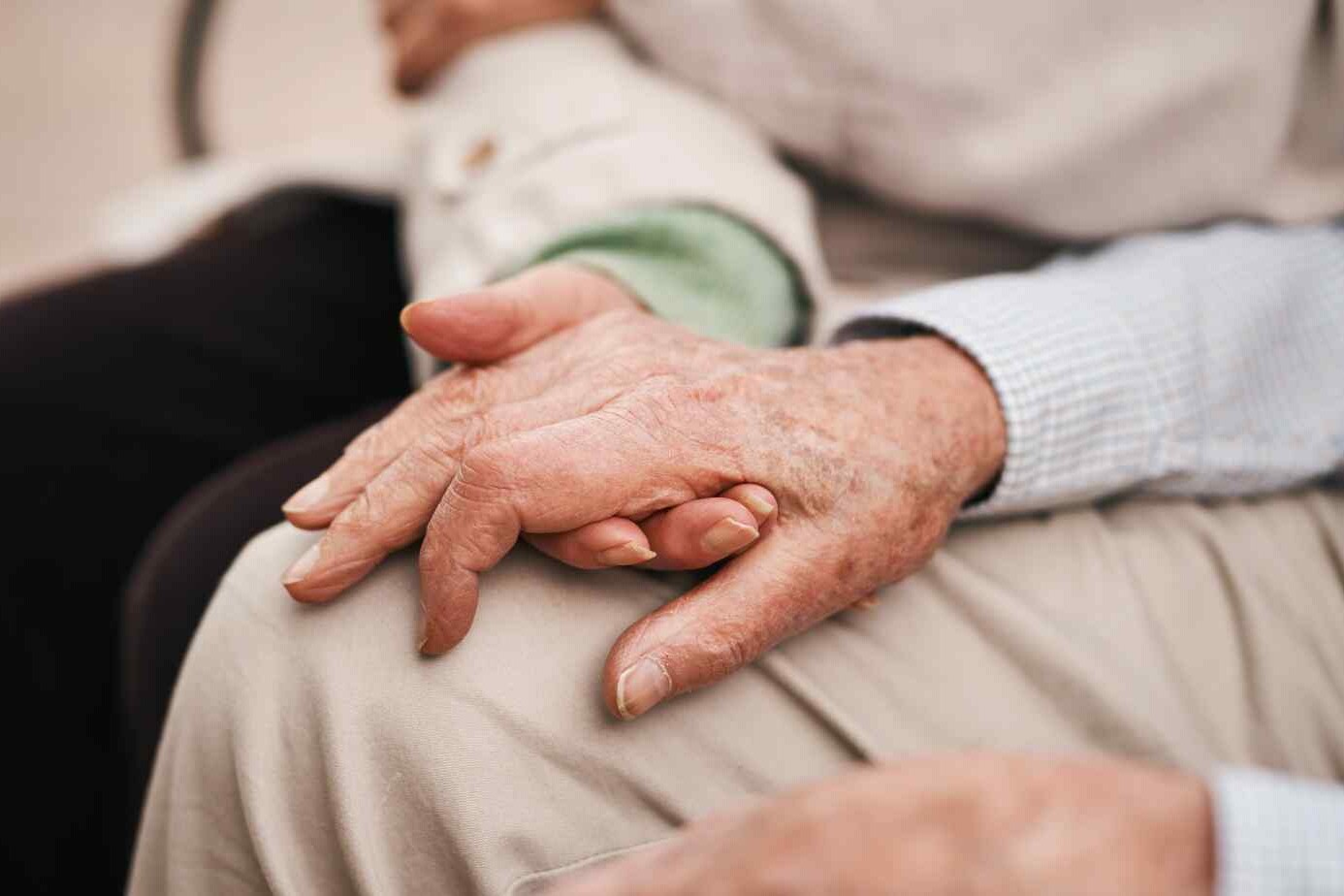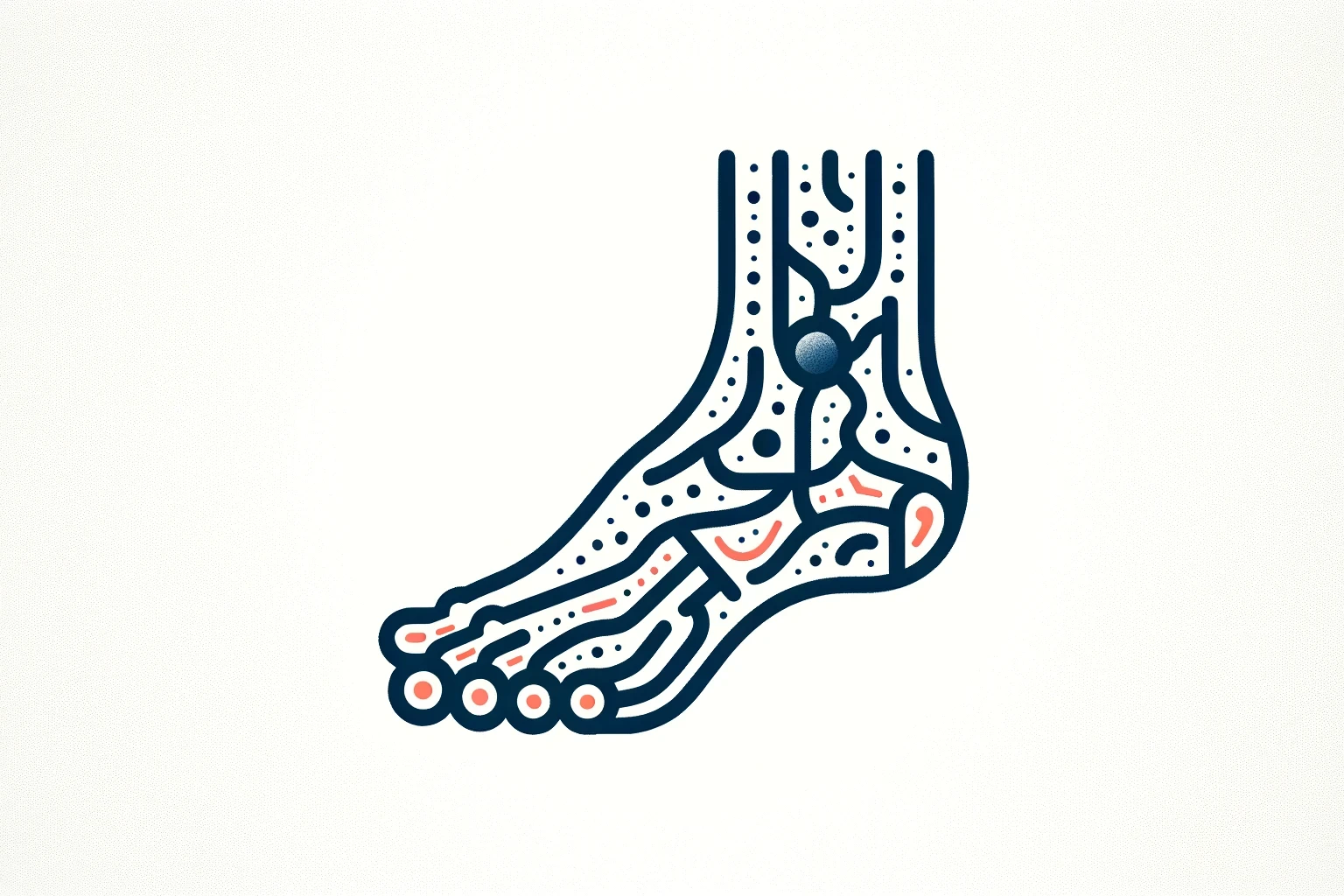Charcot Marie Tooth Disease (CMT) is a group of inherited neurological disorders that affect the peripheral nerves and muscles in the body. While there is no cure for CMT, there are various treatment options available to help manage the symptoms and improve quality of life for individuals with this condition. These treatment options include medications to manage pain, physical and occupational therapy, the use of orthopedic devices, and in some cases, surgery. It is important for individuals with CMT to work closely with a multidisciplinary team of healthcare professionals to create a personalized treatment plan.
Key Takeaways:
- CMT is a group of inherited neurological disorders affecting the peripheral nerves and muscles.
- Treatment options for CMT include medications, therapy, orthopedic devices, and sometimes surgery.
- Working with a healthcare team is crucial in developing a personalized treatment plan.
- Medications can help manage pain and symptoms associated with CMT.
- Physical and occupational therapy can improve mobility and quality of life.
Table of Contents
ToggleDiagnosing Charcot Marie Tooth Disease
Diagnosing Charcot Marie Tooth Disease involves a thorough evaluation by a healthcare provider. During the physical exam, your healthcare provider will assess various symptoms and signs that are characteristic of Charcot Marie Tooth Disease. These may include:
- Muscle weakness: Your healthcare provider will check for muscle weakness, particularly in the lower limbs, as CMT primarily affects the peripheral nerves.
- Reduced reflexes: Reflexes, such as the knee jerk reflex, may be diminished or absent due to the nerve damage associated with CMT.
- Foot deformities: Your healthcare provider will examine your feet for any deformities like high arches or hammertoes, which are common in CMT.
- Sensory loss: Sensory function will be assessed to determine if there is a loss of sensation in the feet and legs.
While the physical exam provides valuable initial insights, diagnostic tests are crucial for confirming a diagnosis of Charcot Marie Tooth Disease. These tests may include:
- Nerve conduction studies: This test measures the speed and strength of electrical signals as they travel through your nerves. It can help determine the extent of nerve damage in CMT.
- Electromyography (EMG): An EMG assesses the health of your muscles and the nerves controlling them. It can help differentiate between muscle and nerve disorders.
- Nerve biopsy: In some cases, a small sample of nerve tissue may be taken for examination under a microscope. This can provide additional information about the specific type of CMT and its genetic basis.
- Genetic testing: Genetic tests can identify the specific genetic defects associated with CMT. They can help confirm a diagnosis and determine the inheritance pattern of the disease.

| Diagnostic Tests | Purpose |
|---|---|
| Nerve Conduction Studies | Measure the speed and strength of electrical signals in the nerves to determine the extent of nerve damage. |
| Electromyography (EMG) | Evaluate the health of muscles and the nerves controlling them to differentiate between muscle and nerve disorders. |
| Nerve Biopsy | Examine a small sample of nerve tissue under a microscope to obtain additional information about the specific type of CMT and its genetic basis. |
| Genetic Testing | Identify the specific genetic defects associated with CMT to confirm a diagnosis and determine the inheritance pattern. |
Medications for Charcot Marie Tooth Disease
While there is no cure for Charcot Marie Tooth Disease (CMT), medications can be used to effectively manage the symptoms associated with this condition. These medications can provide relief from pain and muscle cramps, improving the overall quality of life for individuals with CMT.
Prescription pain medication may be prescribed to control the pain caused by muscle cramps or nerve damage experienced by individuals with CMT. These medications can help alleviate discomfort and improve daily functioning.
Non-steroidal anti-inflammatory drugs (NSAIDs) are another common type of medication used in the management of CMT. These medications can be helpful in alleviating joint and muscle pain, reducing inflammation, and improving mobility.
It is essential to work closely with a healthcare provider to determine the most appropriate medications and dosages for your specific symptoms and needs. Each individual with CMT may have varying symptoms and require a personalized approach to medication management.
Therapy for Charcot Marie Tooth Disease
Physical and occupational therapy play a crucial role in the comprehensive treatment plan for individuals with Charcot Marie Tooth Disease. These therapies focus on improving mobility, preventing disability, and enhancing overall quality of life. Through targeted exercises, muscle strengthening, and adaptive techniques, physical and occupational therapy can help individuals with CMT manage their symptoms effectively.
Physical Therapy
Physical therapy is a key component of the treatment plan for Charcot Marie Tooth Disease. It aims to strengthen and stretch the muscles to prevent muscle tightening and loss. Through low-impact exercises and stretching techniques, a trained physical therapist helps individuals maintain muscle function and improve their range of motion.
Specific exercises for CMT may include:
- Stretching exercises to improve flexibility and reduce muscle stiffness.
- Strength training exercises to enhance muscle tone and prevent muscle weakness.
- Balance and coordination exercises to improve stability and reduce the risk of falls.
A qualified physical therapist will customize the exercise program based on the individual’s specific needs and capabilities. Regular physical therapy sessions, combined with at-home exercises, can significantly improve muscle strength and function for individuals with CMT.
Occupational Therapy
Occupational therapy focuses on helping individuals overcome challenges with everyday tasks and activities. It aims to improve independence and quality of life by teaching adaptive techniques and providing assistive devices if necessary. Occupational therapists work closely with individuals with CMT to develop personalized strategies for managing daily activities more effectively.
Some common areas of focus in occupational therapy for CMT include:
- Developing strategies for managing fatigue and conserving energy during daily activities.
- Adapting techniques for dressing, grooming, and self-care to accommodate muscle weakness or mobility limitations.
- Providing training for the use of assistive devices, such as special grips or clothing with easy fasteners.
- Modifying the home environment to enhance safety and accessibility.
Occupational therapy empowers individuals with CMT to maintain their independence and participate fully in everyday activities, despite the challenges posed by the condition.
Future Treatment Possibilities
In addition to current therapy options, ongoing research offers hope for potential future treatments for Charcot Marie Tooth Disease. Scientists are exploring innovative approaches, such as medication advancements and gene therapies, that could target the root causes of CMT and potentially provide more effective treatment options. Stem cell research shows promise in repairing nerve damage associated with CMT. While these potential treatments are in the experimental stage, they hold significant promise for the future management of CMT.

As research progresses, stay informed and speak with your healthcare provider about any potential future treatments that may become available for Charcot Marie Tooth Disease.
Orthopedic Devices for Charcot Marie Tooth Disease
Many individuals with Charcot Marie Tooth Disease require the use of orthopedic devices to maintain mobility and prevent injury. These devices provide support and assist in improving gait, stability, and overall function. Consulting with a healthcare provider is essential to determine the most appropriate orthopedic devices for each individual’s specific needs.
The Role of Orthopedic Devices
Orthopedic devices play a crucial role in managing Charcot Marie Tooth Disease. They help individuals with CMT maintain mobility, prevent falls, and minimize the risk of complications associated with muscle weakness and foot deformities.
Here are several orthopedic devices commonly used in the treatment of Charcot Marie Tooth Disease:
- Leg and ankle braces or splints: These devices provide stability and support while walking, climbing stairs, and engaging in physical activities. They help correct foot drop and minimize the risk of trips and falls.
- Boots or high-top shoes: Recommended for individuals with ankle instability, these shoes provide additional support to the ankle joint and enhance overall stability.
- Custom-made shoes or shoe inserts: Designed to accommodate specific foot abnormalities, custom-made shoes or shoe inserts improve gait, relieve pressure points, and reduce the risk of foot ulcers.
- Thumb splints: These devices are used to address hand weakness and difficulties with gripping and holding objects. Thumb splints provide stability and support, enhancing hand function and improving daily activities.
Orthopedic devices should be tailored to each individual’s unique needs and prescribed by a healthcare professional experienced in treating Charcot Marie Tooth Disease. Proper fitting and regular reassessment of the devices are crucial to ensure their effectiveness and continued benefit.

Benefits of Orthopedic Devices
The use of orthopedic devices in the treatment of Charcot Marie Tooth Disease offers several important benefits:
- Improved mobility: Orthopedic devices provide stability and support, enabling individuals with CMT to walk more comfortably and confidently.
- Enhanced safety: By preventing falls and reducing the risk of injuries, orthopedic devices help individuals with CMT maintain a higher level of safety in their daily activities.
- Reduced pain and discomfort: Properly fitted orthopedic devices can alleviate pain and discomfort associated with muscle weakness, foot deformities, and joint instability.
- Improved function: Orthopedic devices address specific limitations caused by Charcot Marie Tooth Disease, allowing individuals to perform essential tasks, such as walking, gripping objects, and maintaining balance, more effectively.
Consulting with a healthcare provider experienced in the treatment of Charcot Marie Tooth Disease is essential to identify the most suitable orthopedic devices, ensure proper fitting, and receive ongoing support and guidance.
Surgery for Charcot Marie Tooth Disease
In cases where foot deformities are severe and causing significant pain and mobility issues, surgery may be considered. Corrective foot surgery can help alleviate pain and improve the ability to walk. However, it is important to note that surgery cannot improve weakness or loss of sensation associated with Charcot Marie Tooth Disease. The decision to undergo surgery should be made in consultation with a healthcare provider and based on a thorough assessment of your condition and symptoms.

If you have severe foot deformities due to Charcot Marie Tooth Disease, surgery could be an option to relieve the pain and improve your walking ability. It’s important to remember that surgery cannot address the weakness or loss of sensation caused by the disease. A healthcare provider will assess your condition and symptoms to determine if surgery is the right choice for you.
During the surgical procedure, a skilled surgeon will perform corrective foot surgery to correct the deformities and restore as much functionality as possible. This may involve realigning bones, fusing joints, or removing bone spurs. The specific surgical approach will depend on the nature and severity of your foot deformities.
Following surgery, you will need to follow a rehabilitation program to aid in your recovery. Physical therapy may be recommended to help you regain strength, flexibility, and balance. The duration and intensity of the rehabilitation will vary depending on the complexity of the surgery and your individual needs.
Benefits of Surgery for Charcot Marie Tooth Disease
Surgery for Charcot Marie Tooth Disease can provide several benefits, including:
- Relief from foot pain
- Improved ability to walk and perform daily activities
- Correction of foot deformities
- Enhanced quality of life
Risks and Considerations
While surgery can be beneficial, it is essential to consider the associated risks and potential limitations:
- Risks common to any surgical procedure, such as infection or anesthesia complications
- Possible recurrence or progression of foot deformities over time
- Cannot address weakness or loss of sensation
- Long recovery period
Consultation with a Healthcare Provider
If you are considering surgery for Charcot Marie Tooth Disease, it is important to have a thorough consultation with a healthcare provider. They can assess your specific condition, discuss the potential benefits and risks, and help you make an informed decision.
| Pros | Cons |
|---|---|
| Relief from foot pain | Possible recurrence or progression of deformities |
| Improved walking ability | Cannot address weakness or loss of sensation |
| Correction of foot deformities | Long recovery period |
| Enhanced quality of life |
Potential Future Treatments for Charcot Marie Tooth Disease
As researchers continue to delve into the complexities of Charcot Marie Tooth Disease (CMT), they are actively exploring potential future treatments that hold promise for individuals with this condition. These upcoming treatments aim to address the underlying causes of CMT and provide more targeted interventions to improve the lives of those affected.
Included among these potential future treatments are:
- Medications: Researchers are investigating new medications that can target the specific mechanisms and pathways involved in CMT. These medications may help alleviate symptoms, slow down disease progression, or even potentially reverse the damage caused by CMT.
- Gene Therapy: Another avenue of research is gene therapy, which involves delivering corrected genes into the body to replace the faulty ones responsible for CMT. This approach holds immense potential in preventing the passing of the disease to future generations and addressing the root cause of CMT.
- In Vitro Procedures: In vitro procedures involve interventions carried out outside of the body with the aim of preventing the transmission of CMT to future generations. These procedures may include techniques such as pre-implantation genetic diagnosis (PGD) or in vitro fertilization (IVF) with genetic testing to ensure the selection of embryos without the faulty genes associated with CMT.
- Stem Cell Research: Stem cell research is also showing promise in the field of CMT. Scientists are exploring the potential use of stem cells to repair damaged nerves and restore function in individuals with CMT. This groundbreaking approach has the potential to significantly improve the lives of those affected by this condition.
While these potential future treatments are still in the experimental stage and require further research and development, they offer hope for the future of CMT treatment. It is important for individuals with CMT and their healthcare providers to stay informed about the latest advancements in research and discuss these potential treatments as part of their overall management plan.
The Promise of Future Treatments
The exploration of potential future treatments for Charcot Marie Tooth Disease brings renewed hope and optimism for individuals affected by this condition. The advancements in medications, gene therapy, in vitro procedures, and stem cell research hold the potential to revolutionize the treatment landscape for CMT, offering new avenues for improved quality of life, symptom management, and potentially even a cure.
However, it is essential to note that these potential treatments are still in the early stages of development, and their widespread availability may take time. Rigorous clinical trials, regulatory approvals, and safety assessments are necessary steps to ensure their efficacy and safety. Therefore, it is crucial for individuals with CMT to maintain open communication with their healthcare providers and participate in discussions about possible future treatments as a part of their comprehensive care plan.
Self-Care Tips for Managing Charcot Marie Tooth Disease
Along with medical treatments, implementing self-care practices is essential for individuals with Charcot Marie Tooth Disease to effectively manage their symptoms and prevent complications. By adopting these self-care habits, you can improve your quality of life and maintain overall well-being.
Regular Stretching Exercises
To enhance joint mobility and reduce the risk of joint deformities, incorporate regular stretching exercises into your daily routine. These exercises help to keep your muscles flexible and prevent stiffness.
Daily Low-Impact Exercise
Engage in daily low-impact activities like biking and swimming to strengthen your muscles, enhance balance and coordination, and improve overall physical fitness. These exercises are gentle on your joints while still providing a great workout.
Proper Foot Care
To prevent complications and maintain healthy feet, pay attention to foot care. Regularly inspect your feet for any signs of injury or infection. Take care of your nails by keeping them trimmed and clean. Wear properly fitting shoes with good arch support to reduce the risk of foot problems.
Maintain a Healthy Weight
Excess weight can put additional strain on your muscles and joints. Aim to maintain a healthy weight through a balanced diet and regular exercise. Consult with a healthcare professional or a registered dietitian to create a personalized nutrition plan that suits your specific needs.
Avoid Excessive Alcohol Consumption
Excessive alcohol consumption can have negative effects on your overall health and well-being. Limit your alcohol intake or avoid it altogether to minimize the impact on your symptoms and overall functioning.
Practice Good Posture
Improper posture can exacerbate muscle weakness and alignment issues commonly associated with Charcot Marie Tooth Disease. Be mindful of your posture while sitting, standing, and walking. Maintain a straight back and try to distribute your weight evenly to alleviate strain on specific areas of your body.
Self-Care Tips for Managing Charcot Marie Tooth Disease
| Self-Care Tip | Description |
|---|---|
| Regular Stretching Exercises | Improve joint mobility and reduce the risk of joint deformities. |
| Daily Low-Impact Exercise | Strengthen muscles, improve balance, and enhance coordination. |
| Proper Foot Care | Inspect feet, take care of nails, and wear properly fitting shoes. |
| Maintain a Healthy Weight | Manage a balanced diet and engage in regular exercise to maintain a healthy weight. |
| Avoid Excessive Alcohol Consumption | Limit alcohol intake to minimize the impact on symptoms and overall functioning. |
| Practice Good Posture | Maintain a straight back and distribute weight evenly to alleviate strain on the body. |
By incorporating these self-care tips into your daily routine, you can effectively manage your Charcot Marie Tooth Disease symptoms and improve your overall quality of life.

Conclusion
Charcot Marie Tooth Disease (CMT) is a complex neurological disorder that affects the peripheral nerves and muscles in the body. Although there is currently no cure for CMT, there are several effective management strategies available to help individuals with this condition. By working closely with a multidisciplinary team of healthcare professionals, individuals can create a personalized treatment plan that combines medications, physical and occupational therapy, the use of orthopedic devices, and, in some cases, surgery.
Ongoing research into potential future treatments brings hope for advancements in CMT treatment. Researchers are exploring the use of medications, gene therapy, and in vitro procedures to prevent the passing of the disease to future generations. Stem cell research is also underway to repair nerve damage associated with CMT. Staying informed about these developments and discussing potential future treatments with a healthcare provider is important.
In addition to medical treatments, self-care practices play a crucial role in managing CMT. Regular stretching exercises, daily low-impact activities, and foot care can help improve joint mobility, strengthen muscles, and prevent complications. Maintaining a healthy lifestyle, including maintaining a healthy weight, avoiding excessive alcohol consumption, and practicing good posture, can further support overall well-being for individuals with CMT.
In conclusion, while there is no cure for Charcot Marie Tooth Disease, individuals can optimize their quality of life and maintain overall well-being by combining medical treatments with self-care practices. By staying informed about new research and working closely with healthcare professionals, individuals can effectively manage the symptoms of CMT and live as independently as possible.
FAQ
What is Charcot Marie Tooth Disease?
Charcot Marie Tooth Disease (CMT) is a group of inherited neurological disorders that affect the peripheral nerves and muscles in the body.
Are there any effective treatments for Charcot Marie Tooth Disease?
While there is no cure for CMT, there are various treatment options available to help manage the symptoms and improve quality of life for individuals with this condition.
How is Charcot Marie Tooth Disease diagnosed?
Diagnosing Charcot Marie Tooth Disease involves a physical exam and various diagnostic tests.
What medications are used to manage symptoms of Charcot Marie Tooth Disease?
Medications can be used to help manage symptoms such as pain and muscle cramps.
What role does therapy play in the treatment of Charcot Marie Tooth Disease?
Physical and occupational therapy are essential components of the treatment plan for individuals with Charcot Marie Tooth Disease.
Are orthopedic devices helpful for individuals with Charcot Marie Tooth Disease?
Many individuals with Charcot Marie Tooth Disease require the use of orthopedic devices to maintain mobility and prevent injury.
Is surgery an option for individuals with Charcot Marie Tooth Disease?
In cases where foot deformities are severe and causing significant pain and mobility issues, surgery may be considered.
What potential future treatments are being explored for Charcot Marie Tooth Disease?
Researchers are actively exploring potential future treatments for Charcot Marie Tooth Disease, including the use of medications, gene therapy, and stem cell research.
Are there any self-care tips for managing Charcot Marie Tooth Disease?
In addition to medical treatments, there are several self-care practices that can help individuals with Charcot Marie Tooth Disease manage their symptoms and prevent complications.
Source Links
About The Author

This article is medically reviewed by Dr. Chandril Chugh, Board-Certified Neurologist, providing expert insights and reliable health information.
Dr. Chandril Chugh is a U.S.-trained neurologist with over a decade of experience. Known for his compassionate care, he specializes in treating neurological conditions such as migraines, epilepsy, and Parkinson’s disease. Dr. Chugh is highly regarded for his patient-centered approach and dedication to providing personalized care.
→ Book a consultation to discover which remedies suit your needs best.




